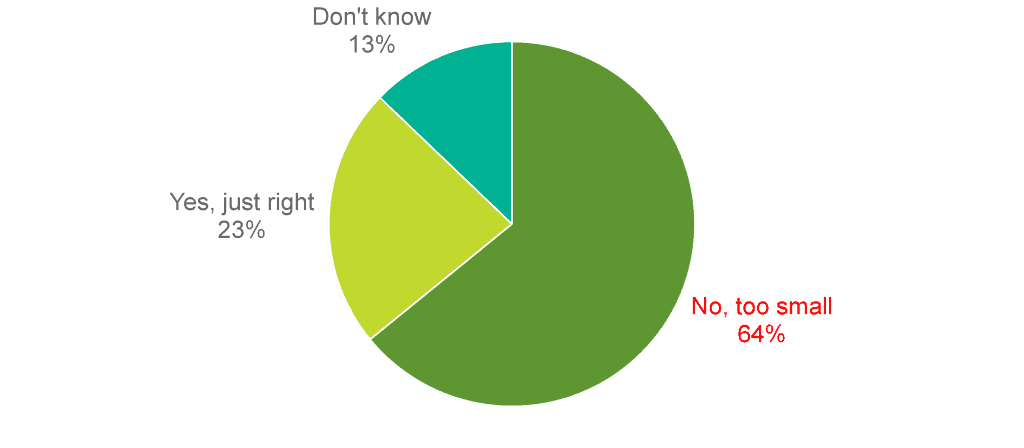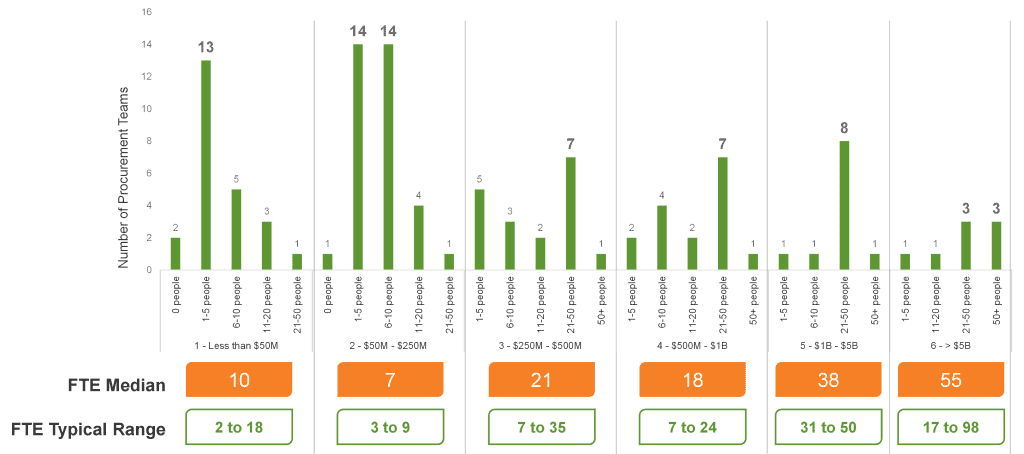So, what is keeping CPOs up at night?

What is one of the biggest challenges for CPOs?
Is it Inflation? Is it Supply Risk mitigation? Is it how they can add extra value to their business?
We spoke to 74 procurement organisations in Australia and their number one concern is… none of the above. Resourcing takes out the top spot. Specifically, the inability to find, recruit and train talent to keep up with the workload.

Figure 1: Do you think your current resourcing is sufficient?
Have a look at figure 1: Two in three of those teams said their team is too small and only 23% said resourcing levels are just right. Interestingly the balance (13%), doesn’t know. So how can we find out how many staff we need to do what is needed of us as procurement?
Grosvenor is undertaking regular research into the state of the procurement profession in Australia. First results from our 2022 research show the benchmarks for the number of staff.
Figure 2 below is admittedly a bit complex to read. We visualise, based on the annual procurement spend, how many staff report directly or indirectly into the Chief Procurement Officer (CPO). The bar chart shows the number of procurement teams that fall within each bracket, eg 1 to 5 staff, 6 to 10 staff, etc.
We then also report the median number of Full Time Equivalent (FTE) staff based on the annual procurement spend (‘FTE Median’). For example, 50% of teams who procure less than $50M worth of goods and services a year have more than 10 FTE, 50% have less than 10 FTE.
The next row contains a ‘typical range’ for the number of staff (‘FTE Typical Range’). Typically, teams with a spend less than $50M employ between 2 and 18 FTE.
Figure 2 includes the same information for the other brackets of annual procurement spend.

Figure 2: What is the right size for your procurement team?
If you spend a bit more time comparing those numbers, they probably generate more questions than answers. For example, why is it that an annual value of up to $250M requires on average less staff than procuring less than $50M?
The answers to these questions will include factors such as:
– The degree of a centralised team vs decentralised team undertaking procurement
– The industry: whether the team operates in the private or public sector
– The number of procurement projects that make up the total value
– The productivity of the team, including processes and systems
So really it is difficult to compare just the numbers. To better understand the underlying factors, we continue our research.
If you are interest







 We are all about sharing our expertise to help you and your organisation be the best it can be.
We are all about sharing our expertise to help you and your organisation be the best it can be.